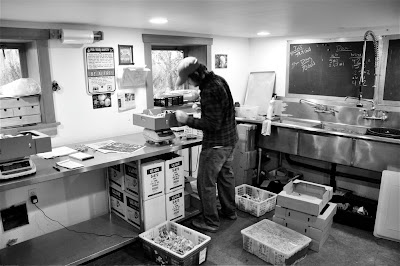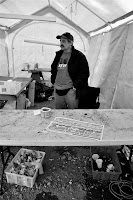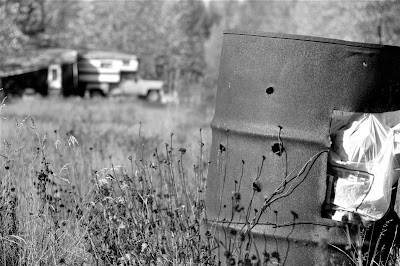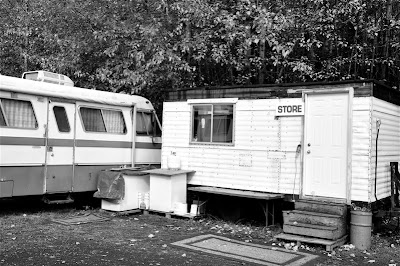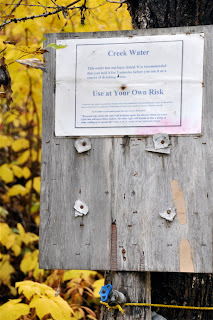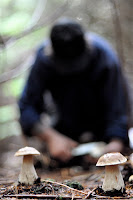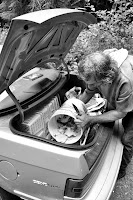Last week I had the distinct pleasure of watching a truffle dog in action. Cooper, the super duper truffle hound, is half lab, a quarter bernese mountain dog, and a quarter shepherd. His owner, Anne Seward, like the owners of many interesting pets, has her own distinguished pedigree: she’s related to the man responsible for “Seward’s Folly.” History buffs and denizens of America’s Last Frontier know that folly as the great State of Alaska. Secretary of State William H. Seward practically raided the U.S. Treasury himself to make sure it was purchased in 1867.
I joined Cooper, Anne, my friend Jack Czarnecki, and Jack’s friend Chris in Oregon’s Willamette Valley to give the dog a workout in search of the first black truffles of the season. In addition to owning the Joel Palmer House restaurant in Dayton, Oregon, where his son Chris is the chef, Jack is also the owner and chief producer of Oregon Truffle Oil, one of the few truffle oils on the market to use real truffles rather than test tube chemicals to produce its powerful flavor and aroma.
Last year I hunted white truffles with Jack. In the right habitat, coming across white truffles is about as challenging as finding chanterelles. Black truffles, on the other hand, require more skill. For one thing, unlike whites they blend in with the duff and dirt. Also, they tend to hang out a little deeper beneath the surface, requiring more digging (though sometimes you can find them poking right through the moss, as if coming up for a breath of air). And lastly, they just don’t seem to be as numerous as whites.
It doesn’t take much to train a truffle dog. Anne spent a week or so hiding little balls of truffle-doused cotton around the house. For a dog expecting a reward, latching on to the truffle scent is puppy’s play. The canine smeller is a biological wonder of evolution, and though not as developed as a bear’s, a dog’s sense of smell is way overmatched for truffles. Some dogs like a food treat to reward a successful retrieval; Cooper wants ball time.
Once we arrived at the site, Anne pulled both a rubber ball and a baggie of truffle-scented cotton from her pockets. She gave Cooper a whiff, holding the ball tantalizingly out of reach. “Find the truffle,” she commanded. Cooper barked and whined, then got down to business. He put his snout to the ground and started weaving among the sword ferns and second-growth Douglas firs. You could hear his nose in action as he brought the scent in and circulated it around with a snort. A moment later Cooper was scratching at a patch of duff.
“Good boy!” Anne played ball with Cooper while Jack raked the spot. Sure enough, he unearthed a nice walnut-sized black truffle, and then another. “His brother,” Jack said, explaining that wherever you find one black truffle you’re sure to find another.
Without Cooper on hand I’m sure our haul would have been appreciably less impressive. As it was we lined our buckets with truffles while the rain kept up through most of the morning. I’d guess we found truffles in roughly 80 percent of the spots where Cooper scratched; the other 20 percent we chalked up to human error. By mid-afternoon it was cold and miserable enough to call it a day. That’s when the Volvo pitched into the mire. We enlisted the aid of a local farmer, who pulled us out free of charge, knowing that a batch of truffle oil was in his future.
That night we capped our successful truffle hunt with dinner back at the Joel Palmer House, where a Candy Cap Martini kicked off a mushroom hunter’s feast, including Matsutake Chowder, Fungi Tart, Fillet of Beef with Porcini Sauce, and many other finely executed fungal delights washed down with excellent local Pinot Noirs.
I could get used to this Willamette Valley truffle hunting thing.












